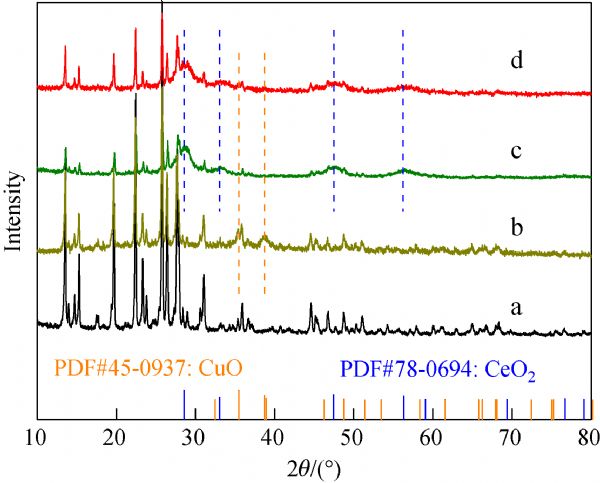Homogeneous carbonylation of methanol using carbonyl Rh (Monsanto) [
1] or Ir (BP Cativa
TM) [
2] as catalysts to prepare acetic acid (AA) and methyl acetate (MA) has been industrialized on a large scale. However, Rh and Ir catalysts cannot activate methanol directly; hence, corrosive iodomethane (CH
3I) must be used as an accelerator [
3,
4]. The process itself has problems such as difficulty in separating products from catalysts, loss of precious metals, requirements for a large investment in equipment and high energy consumption [
5]. Thus, a number of catalysts, such as Ni/AC [
6,
7], Cu/TiO
2-SiO
2 [
8], Cu/H-MOR [
9,
10], Ir-La/AC [
11,
12], Au/TiO
2 [
13], Au/AC [
14], and Rh-I copolymeric catalysts [
15], have been tested for heterogeneous methanol carbonylation. Kwak et al. [
11] discovered a heterogeneous Ir-La/C catalyst that is highly active, selective, and stable for the carbonylation of methanol to produce AA, achieving a very high productivity of approximately 1.5 mol acetyl·mol
Ir–1·s
–1 with>99% selectivity toward acetates. Feng et al. [
12] also reported a heterogeneous single atom Ir-La/AC catalyst to produce MA in a fixed-bed reactor. The catalyst showed a turn-over-frequency (TOF) value as high as 2200 h
–1, a selectivity to MA greater than 90% and an MA space time yield of 8200 g·kg
cat–1·h
–1. These works contributed to the advancement of heterogeneous methanol carbonylation. Unfortunately, systems with high MA selectivity require CH
3I as an accelerator. However, halides are not ideal raw materials because of their extreme corrosiveness that results in a need for very expensive anti-corrosive materials. The serious influence and potential harm of various toxic halides on human health, water, soil, and atmospheric environments have attracted considerable attention. Eliminating or reducing the use of halides to decrease pollutant emissions and protect human health is in line with the aims of green chemistry and sustainable development. Therefore, the development of catalysts with competitive activity and selectivity comparable to those of homogeneous catalysts for halide-free heterogeneous methanol carbonylation has become a research hotspot in recent decades.













